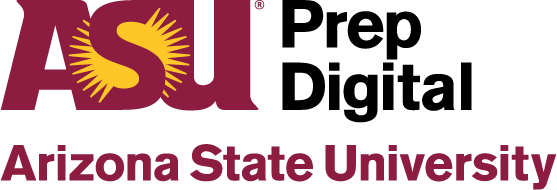Now more than ever, students need to be truly engaged in their learning.
Question: How do you empower students to actively explore real-world challenges and acquire transferable knowledge?
Answer: Introduce Project-based Learning.
What is Project-Based Learning?
Project-based learning (PBL) is a method of teaching in which students work for a period of time on a real-world question, problem, or challenge. It’s driven by their inquiry. The long-term project involves collaboration, feedback, reflection, and revision throughout the project duration. The student’s self-driven exploration and knowledge is then to be shared with an audience.
PBL provides students with dynamic learning experiences and easily integrates technology and online learning. That’s why the Arizona Virtual Teacher Institute created a three-part professional development series on PBL. In this series, participants examine the fundamentals of PBL beginning with understanding the “what” and “why” of this learning method. In the second session, “PBL in Action,” learners will explore different PBL projects that have been completed to understand how it can be applied to the classroom. The final session, “Facilitating PBL,” focuses on the role teachers play during the project.
With an emphasis on using technology in meaningful ways to enhance student learning, tools and resources are showcased to help make it manageable for teachers and more effective for students.
Benefits of PBL
Annabelle Davey, M.Ed., ASU Prep Digital Teacher Trainer, said, “PBL is taking what students are interested in and allowing them to dive in and follow the inquiry to wherever it takes them. The key is to pique their interests. By running an organized PBL cycle or project path, students are empowered and engaged in self-directed learning.”
The PBL series was part of ASU Prep Digital’s summer boot camp and was a popular session AZVTI is pleased to offer this fall.
“We are always looking to engage students and make them feel that they are driving their learning,” said Davey.
Flexibility is key
While PBL fuels critical thinking and collaboration among students, it also allows teachers to restructure and reorganize to make the best use of their time. Project length can vary from one week to quarter-long projects and anywhere in between. Teachers have the flexibility to make it work for their classroom.
“It’s about sustaining inquiry throughout a project, really allowing for student voice and choice. For a lot of teachers, that can be scary,” said Davey. “Whatever the end product is, whether a presentation or proposal, they built something or made a product, at the end, they have an opportunity to present and showcase their work to an audience. Be flexible and open. It’s authentic learning.”
Davey shared that teachers who try to incorporate PBL into their classrooms tend to have good results and are interested in learning more.
Project-Based Learning in Action – Saturday, October 22 | 9-11 a.m. (MST)
Facilitating Project-Based Learning – Saturday, October 29 | 9-11 a.m. (MST)
Participants earn two hours of professional development credit for each collaborative learning session attended.
If you’re interested in bringing Project-based Learning Training to your school or district, please visit asuprepdigital.com/training.


